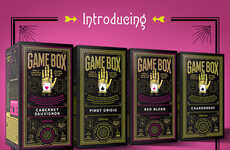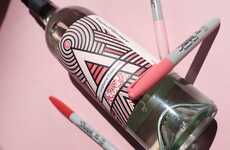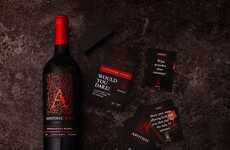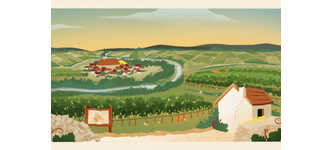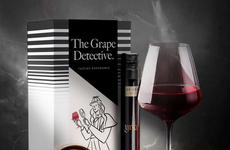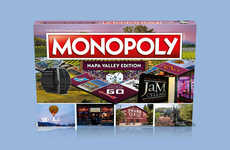
This Game-Like Wine Label Lets Consumers Play Tic-Tac-Toe & Decide Who Pays
References: packagingoftheworld & psfk
Design student Santiago Arraz has designed a game-like wine label as a prototype that adds a tic-tac-toe board to each bottle. The idea for this label is to encourage consumers to partake in a playful game in order to decide who buys the wine.
While the game can simply be played for fun as well, the increased competitive vibe is a fun way to increase the humor of this packaging. The tic-tac-toe board on the bottle is placed on chalkboard material. The phrase "who pays?" is written above the game board.
This creative game-like wine label is a fun way to increase consumer happiness and overall joy. The bottle of Spanish Boulanger wine is completely black with the white lettering, white game board and the name of the brand, which is located at the base of the bottle.
While the game can simply be played for fun as well, the increased competitive vibe is a fun way to increase the humor of this packaging. The tic-tac-toe board on the bottle is placed on chalkboard material. The phrase "who pays?" is written above the game board.
This creative game-like wine label is a fun way to increase consumer happiness and overall joy. The bottle of Spanish Boulanger wine is completely black with the white lettering, white game board and the name of the brand, which is located at the base of the bottle.
Trend Themes
1. Interactive Wine Labels - Creating wine labels that incorporate interactive elements, such as games, to engage consumers and enhance the overall experience.
2. Gamification in Packaging - Utilizing game-like features in product packaging to add an element of fun and entertainment that resonates with consumers.
3. Competitive Consumer Engagement - Encouraging consumers to actively participate in competitive activities, like playing games, as a way to enhance brand engagement and build loyalty.
Industry Implications
1. Wine and Spirits - Incorporating interactive and gamified labeling strategies into the wine industry to attract and engage consumers in a unique and memorable way.
2. Packaging and Design - Exploring innovative approaches to packaging design by incorporating gamification elements to create a more interactive and captivating product experience.
3. Marketing and Branding - Leveraging game-like features in product packaging as a marketing strategy to differentiate brands, build consumer excitement, and create buzz.
3.1
Score
Popularity
Activity
Freshness

